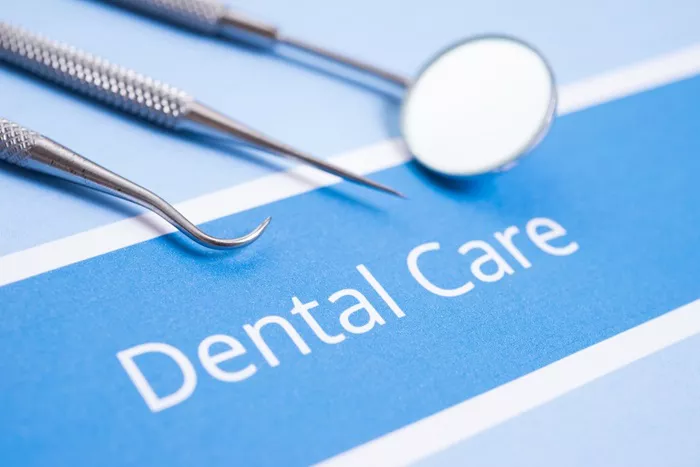Dental health is a critical component of overall well-being, yet many people often overlook the importance of maintaining regular dental care. Voluntary dental insurance can be a valuable tool in promoting dental health by making dental care more affordable and accessible. This article explores what voluntary dental insurance is, the types of coverage it offers, the costs involved, the benefits of enrolling, and more. Whether you’re considering enrolling in a voluntary dental insurance plan or simply want to understand its advantages, this comprehensive guide will provide you with the information you need.
Definition of Voluntary Dental Insurance
Voluntary dental insurance is an optional insurance plan offered by employers or purchased individually, which provides coverage for a variety of dental services. Unlike standard dental insurance, which may be included as part of a mandatory benefits package, voluntary dental insurance is not automatically provided by employers and requires employees or individuals to opt in and pay for the coverage themselves. This type of insurance is designed to help reduce out-of-pocket expenses for dental care and encourage regular dental visits.
How It Differs from Standard Dental Insurance
The primary difference between voluntary and standard dental insurance lies in their nature and funding. Standard dental insurance is typically a part of an employer’s benefits package and may be fully or partially paid for by the employer. In contrast, voluntary dental insurance is usually paid entirely by the employee or individual. Additionally, voluntary dental insurance plans often offer more flexibility in terms of coverage options and plan selection.
Types of Coverage Provided
Voluntary dental insurance plans generally offer coverage across three main categories: preventive care, basic procedures, and major services. Understanding these categories can help individuals choose the plan that best suits their needs.
Preventive Care
Preventive care includes routine dental services aimed at maintaining oral health and preventing dental issues. Common preventive services covered under voluntary dental insurance plans include:
Routine Cleanings and Exams: Typically covered every six months, these services help maintain oral hygiene and detect potential issues early.
X-rays: Used to identify cavities, bone loss, and other dental problems that may not be visible during a regular exam.
Fluoride Treatments and Sealants: Often covered for children, these treatments help prevent tooth decay.
Basic Procedures
Basic procedures address common dental problems that require more than preventive care but are not as complex as major services. Coverage for these procedures usually includes:
Fillings: Used to treat cavities and restore the function of decayed teeth.
Simple Extractions: Removal of teeth that are damaged or decayed beyond repair.
Periodontal Treatments: Care for gum diseases, including deep cleanings and root planing.
Major Services
Major services involve more extensive dental work and are generally more costly. Voluntary dental insurance plans may cover:
Crowns and Bridges: Used to restore damaged teeth or replace missing teeth.
Dentures: Full or partial sets of artificial teeth.
Orthodontics: Treatments like braces or aligners to correct misaligned teeth.
Root Canals: Procedures to treat infected tooth pulp and save the natural tooth.
See Also: What Does No Deductible Mean On Dental Insurance
Costs Involved
Understanding the costs associated with voluntary dental insurance is crucial for making an informed decision. These costs can vary widely based on the plan chosen and the level of coverage provided.
Premiums
Premiums are the monthly payments made to maintain the insurance policy. For voluntary dental insurance, these premiums are typically paid by the employee or individual. The cost of premiums can vary based on factors such as the coverage level, the insurance provider, and the individual’s age and location.
Deductibles
A deductible is the amount the insured must pay out-of-pocket before the insurance begins to cover expenses. Deductibles for dental insurance plans are usually lower than those for medical insurance and can range from $50 to $150 annually.
Co-pays
Co-pays are the fixed amounts paid by the insured for specific services. For example, a dental plan might require a co-pay of $20 for a routine cleaning. Co-pays help share the cost of care between the insurer and the insured.
Maximum Coverage Limits
Most dental insurance plans have an annual maximum coverage limit, which is the maximum amount the insurer will pay for covered services in a year. This limit can range from $1,000 to $3,000. Once this limit is reached, the insured is responsible for any additional costs.
Benefits of Enrolling in Voluntary Dental Insurance
Enrolling in a voluntary dental insurance plan offers several significant benefits that can positively impact both financial well-being and dental health.
Cost Savings on Dental Procedures
One of the primary benefits of voluntary dental insurance is the cost savings on dental procedures. By covering a portion of the costs for preventive care, basic procedures, and major services, dental insurance helps reduce out-of-pocket expenses and makes dental care more affordable.
Improved Dental Health
Regular dental visits are essential for maintaining oral health and preventing serious dental issues. Voluntary dental insurance encourages individuals to seek regular dental care by covering routine exams and cleanings, leading to better overall dental health.
Access to a Network of Dentists
Many dental insurance plans have a network of preferred providers. Enrolling in a voluntary dental insurance plan can give individuals access to a network of dentists who offer negotiated rates for covered services, further reducing the cost of care.
Examples of Typical Procedures Covered
Understanding what procedures are typically covered under voluntary dental insurance can help individuals assess the value of a plan. Here are some common procedures often included in coverage:
Cleanings: Regular cleanings are essential for removing plaque and tartar buildup and maintaining oral health.
Fillings: Used to treat cavities, fillings restore the function and appearance of decayed teeth.
X-rays: Diagnostic x-rays help detect dental issues that are not visible during a regular exam.
Root Canals: A root canal procedure is used to treat infected tooth pulp and save the natural tooth.
Orthodontics: Braces or aligners are used to correct misaligned teeth and improve dental function.
Eligibility Requirements and Enrollment Process
Eligibility requirements for voluntary dental insurance can vary by provider, but generally, most individuals are eligible to enroll. Here are some common steps involved in the enrollment process:
Assessing Eligibility
Eligibility typically depends on factors such as employment status (for employer-sponsored plans) or residency (for individual plans). Some plans may also have age restrictions.
Choosing a Plan
Individuals should compare different plans based on coverage levels, costs, and the network of providers. It’s important to choose a plan that meets individual dental needs and budget.
Enrolling in the Plan
Enrollment usually involves filling out an application form and providing necessary information such as personal details, employment information (for employer-sponsored plans), and payment details. Some plans may also require a waiting period before certain services are covered.
Tips for Comparing Voluntary Dental Insurance Plans
When comparing voluntary dental insurance plans, consider the following tips to find the best fit for your needs:
Compare Coverage Levels
Look at the coverage provided for preventive care, basic procedures, and major services. Ensure the plan covers the services you are most likely to need.
Check Network Providers
Review the network of dentists and specialists included in the plan. Ensure there are convenient and reputable providers available in your area.
Evaluate Costs
Compare premiums, deductibles, co-pays, and maximum coverage limits. Consider how these costs align with your budget and dental care needs.
Read Reviews
Look for customer reviews and ratings of the insurance provider. This can provide insight into the quality of service and customer satisfaction.
Understand Exclusions and Limitations
Carefully read the policy documents to understand any exclusions or limitations. Knowing what is not covered is just as important as knowing what is covered.
Conclusion
Voluntary dental insurance is an optional yet valuable tool that can help individuals manage the cost of dental care and maintain better oral health. By understanding the types of coverage provided, the costs involved, and the benefits of enrolling, individuals can make informed decisions about their dental insurance needs. Comparing different plans, reading customer reviews, and understanding insurance terms and conditions are essential steps in finding the best coverage. With the right voluntary dental insurance plan, individuals can enjoy cost savings on dental procedures, access to a network of providers, and improved dental health, making it a worthwhile investment in their overall well-being.
[inline_related_posts title=”You Might Be Interested In” title_align=”left” style=”list” number=”6″ align=”none” ids=”2565,2486,2417″ by=”categories” orderby=”rand” order=”DESC” hide_thumb=”no” thumb_right=”no” views=”no” date=”yes” grid_columns=”2″ post_type=”” tax=””]




















